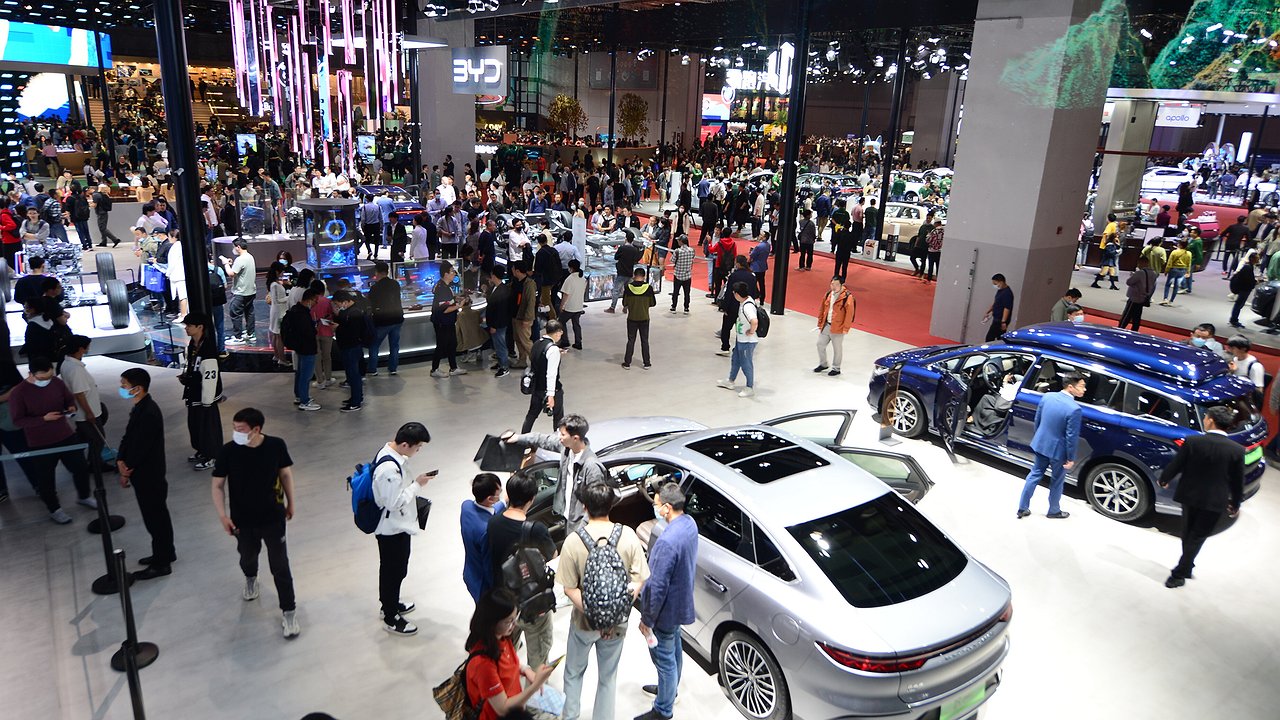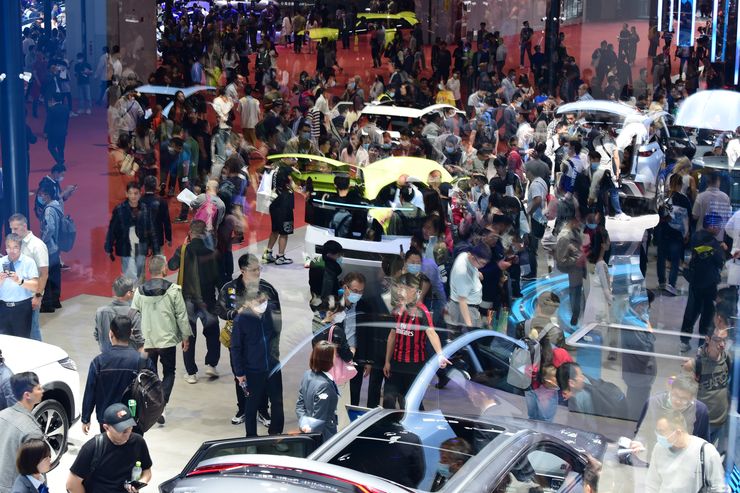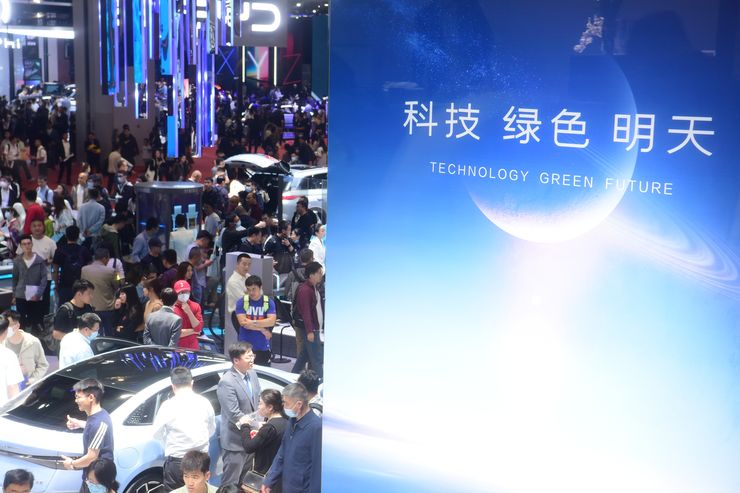How Chinese automakers rot US competitors
- April 22, 2023
- 0
While US politicians and authorities rack their brains over the task of limiting China’s economic development as much as possible, Celestial’s auto industry is already poised to beat
While US politicians and authorities rack their brains over the task of limiting China’s economic development as much as possible, Celestial’s auto industry is already poised to beat

“We will have to rethink the positioning of the Ford brand in China. We cannot count on success in the middle price segment of the Chinese car market. This segment is packed,” Ford Motor Co. CEO Jim Farley told reporters at a charity event in Detroit.
He gave no details about a possible reboot of Ford’s branding strategy in the Middle Kingdom. However, the company’s mood of “something has to be done” in the Chinese market can be clearly seen.
It should be understood that Ford “plays” in the mid-range price segment in most automotive arenas in the world. In the budget niche and “top” of the American company, there is really nothing to offer the buyer. In China, the “affordable” niche is almost entirely occupied by local car brands.
Foreign brands are offered in the middle and premium segment. The “middle” of the Chinese car market, according to Farley, is characterized by the highest level of competition, and it is quite possible to assume that other foreign brands are not very comfortable there now.
As for the premium segment of the Chinese market, it is worth saying that the “Germans” are now quite comfortable in it. Well, partly the Japanese with their Lexus. Especially since the local Chinese car brands, which consider themselves premium, have not yet “grown appearance”, similar to the image of the German Mercedes-Benz, BMW and Audi.
Indeed, the latter’s success is largely due to their commitment to electric vehicles and hybrids on the local market. Such transport has become extremely popular in China in recent years thanks to active incentives from the state. And now the electric transportation phenomenon of the Celestial Empire market is ready to turn to European and American automakers with its not the most pleasant side.
The fact is that in Western countries, ecological “nuts” are now stubbornly tightened, prompting the population to switch to all sorts of “green” types of cars – “trains” and plug-in “hybrids”. The local car industry is responding to this by making models that meet the environmental requirements of the near future, but with a strategic delay.
Because the Chinese already have a slew of mass-produced models that fit perfectly into the “green” consumer regulation paradigm of Europe and the United States. European and American car manufacturers in their model lines today only have a few electric vehicles at best.
And in China there are already more than a dozen purely “electric” brands. And everyone has their own line of “battery” cars. And every major automaker in China is already offering customers at least a few of their own electric vehicles and “hybrids” – for every taste and budget. At the same time, Chinese electric vehicle manufacturers are clearly focused on the premium markets for them in Europe and America. If only because in Chinese (admittedly huge) the competition is off the charts.
Everything indicates that in the coming years we will witness the aggressive expansion of Chinese “green” vehicles in the US and the EU, which will be very difficult for local automakers. Unless, of course, geopolitics intervene in these natural processes…


“We will have to rethink the positioning of the Ford brand in China. We cannot count on success in the middle price segment of the Chinese car market. This segment is packed,” Ford Motor Co. CEO Jim Farley told reporters at a charity event in Detroit.
He gave no details about a possible reboot of Ford’s branding strategy in the Middle Kingdom. However, the company’s mood of “something has to be done” in the Chinese market can be clearly seen.
It should be understood that Ford “plays” in the mid-range price segment in most automotive arenas in the world. In the budget niche and “top” of the American company, there is really nothing to offer the buyer. In China, the “affordable” niche is almost entirely occupied by local car brands.
Foreign brands are offered in the middle and premium segment. The “middle” of the Chinese car market, according to Farley, is characterized by the highest level of competition, and it is quite possible to assume that other foreign brands are not very comfortable there now.
As for the premium segment of the Chinese market, it is worth saying that the “Germans” are now quite comfortable in it. Well, partly the Japanese with their Lexus. Especially since the local Chinese car brands, which consider themselves premium, have not yet “grown appearance”, similar to the image of the German Mercedes-Benz, BMW and Audi.
Indeed, the latter’s success is largely due to their commitment to electric vehicles and hybrids on the local market. Such transport has become extremely popular in China in recent years thanks to active incentives from the state. And now the electric transportation phenomenon of the Celestial Empire market is ready to turn to European and American automakers with its not the most pleasant side.
The fact is that in Western countries, ecological “nuts” are now stubbornly tightened, prompting the population to switch to all sorts of “green” types of cars – “trains” and plug-in “hybrids”. The local car industry is responding to this by making models that meet the environmental requirements of the near future, but with a strategic delay.
Because the Chinese already have a slew of mass-produced models that fit perfectly into the “green” consumer regulation paradigm of Europe and the United States. European and American car manufacturers in their model lines today only have a few electric vehicles at best.
And in China there are already more than a dozen purely “electric” brands. And everyone has their own line of “battery” cars. And every major automaker in China is already offering customers at least a few of their own electric vehicles and “hybrids” – for every taste and budget. At the same time, Chinese electric vehicle manufacturers are clearly focused on the premium markets for them in Europe and America. If only because in Chinese (admittedly huge) the competition is off the charts.
Everything indicates that in the coming years we will witness the aggressive expansion of Chinese “green” vehicles in the US and the EU, which will be very difficult for local automakers. Unless, of course, geopolitics intervene in these natural processes…
Source: Avto Vzglyad
Donald Salinas is an experienced automobile journalist and writer for Div Bracket. He brings his readers the latest news and developments from the world of automobiles, offering a unique and knowledgeable perspective on the latest trends and innovations in the automotive industry.